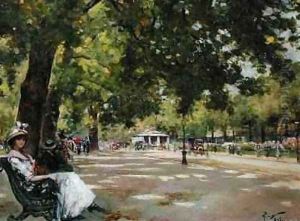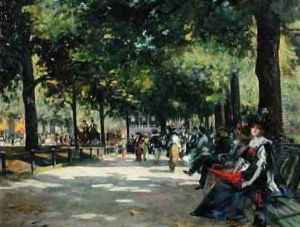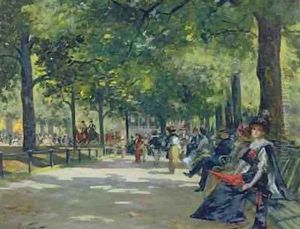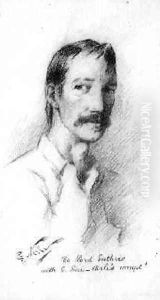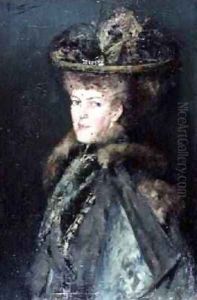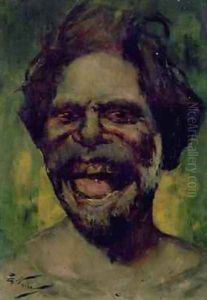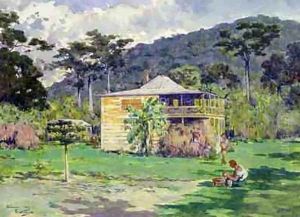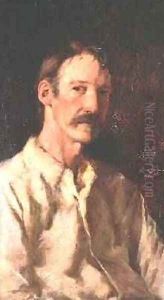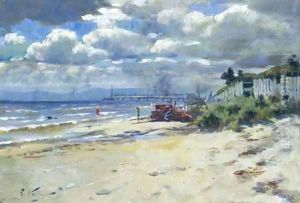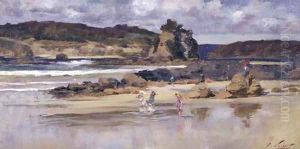Count Girolamo Pieri Nerli Paintings
Count Girolamo Pieri Nerli was an Italian painter who played a significant role in the art scene of his time. Born on March 24, 1863, in Siena, Italy, into an aristocratic family, Nerli had the privilege of pursuing an education in the arts from a young age. He studied at the Institute of Fine Arts in Siena before continuing his education in Florence. Later, he expanded his artistic horizons by traveling and studying in other European art centers, including Paris and London, where he was exposed to various artistic styles and movements.
Nerli's painting style was influenced by the Macchiaioli, a group of Italian artists who focused on painting outdoor scenes with quick brushstrokes and a focus on light. Although associated with them, he never became a formal member of the group. His works often depicted social scenes, landscapes, and portraits, which were characterized by vibrant colors and a loose, impressionistic technique.
In the 1880s, Nerli moved to Australia and then to New Zealand, where he became a prominent figure in the local art scenes and influenced many local artists. In New Zealand, his students included notable figures such as Frances Hodgkins. Nerli's impact was such that he helped introduce impressionist techniques and ideas to Australasian artists, significantly shaping the development of their art styles.
Girolamo Pieri Nerli's work received international recognition during his lifetime, and he exhibited in various countries, including Italy, England, and France. Despite his noble status, Nerli chose to live a bohemian lifestyle, often struggling financially. His adventurous life and international influence were somewhat atypical for artists of his social background.
Nerli eventually returned to Europe and continued to paint until his death. He passed away on June 24, 1926, in Florence. Today, his works are held in several public collections, including galleries in Australia, New Zealand, and Italy, and he is remembered for his contribution to the impressionist movement and his role in bridging European and Australasian art.
